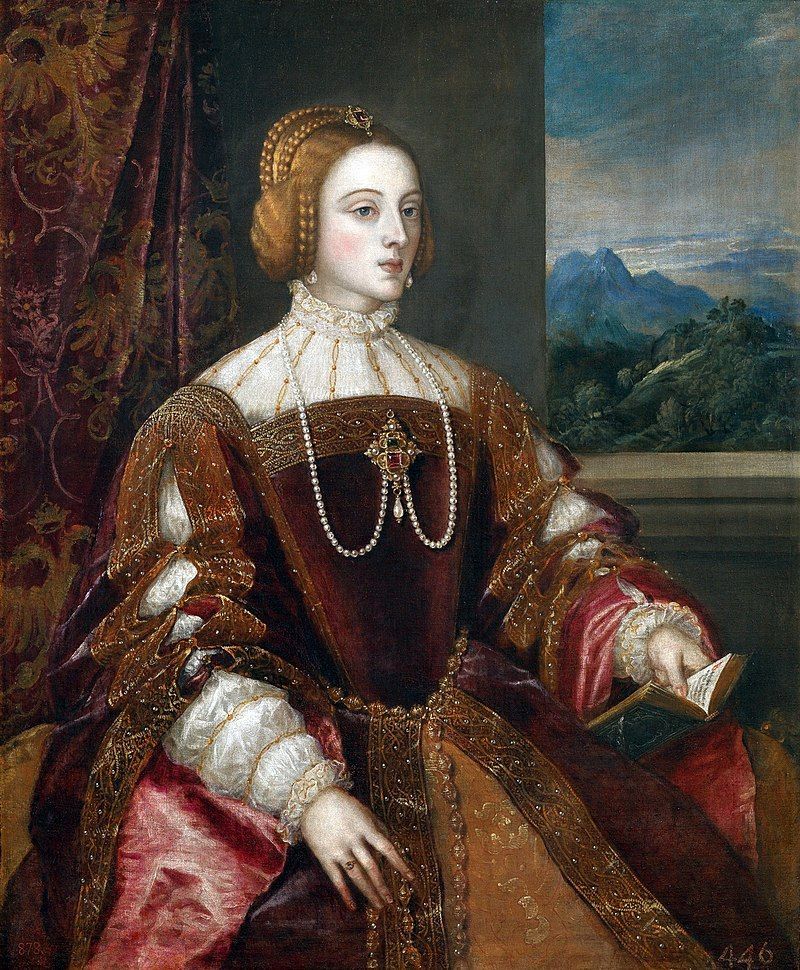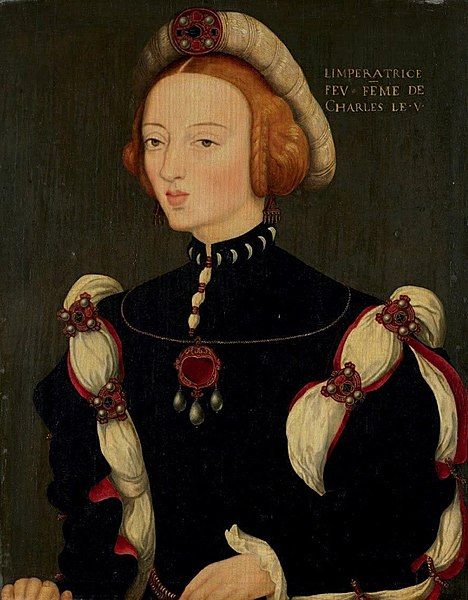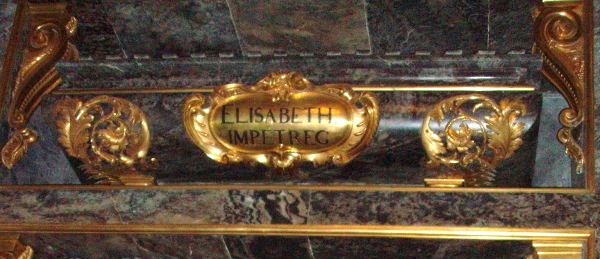Father:
Manuel I, King of Portugal (1469-1521)
Mother:
Maria of Aragon and Castille (1482-1517)
Isabel was named after her maternal grandmother, Isabella I of Castile and her aunt Isabella, Princess of Asturias, who had been her father's first wife.
Through her father, she was a granddaughter of Infante Ferdinand, Duke of Viseu (the second son of king Edward of Portugal and brother of Afonso V of Portugal) and Infanta Beatrice, the daughter of Infante João, Lord of Reguengos (brother of king Edward). Through her mother she was a granddaughter of Isabella I of Castile and Ferdinand II of Aragon.
Isabel was second-in-line to the throne until the birth of her brother Louis in 1505. However, as the oldest daughter of Manuel I of Portugal, she was a rather attractive party. She married her first cousin, Charles, the son of Joan I of Spain and Philip of Habsburg, Duke of Burgundy and the heir to the crowns of Spain, Burgundy and the Holy Roman Empire.
In 1521 Isabel's father died and her brother succeeded to the throne as king John III. The marriage negotiations between the Portuguese and Spanish began almost immediately. It was agreed that the new king would marry Catherine of Habsburg, Charles V's younger sister. The union between Charles and Isabel only took place three years later, by procuration in 1525. The Infanta travelled to Seville where the wedding took place on March 10, 1526. With Isabel also came a huge dowry to the Spanish finances. Although it was a political union, the marriage proved to be a love-match. Records say that during their honeymoon "when [Charles and Isabel] are together, although there are many people around, they do not notice anyone else; they talk and laugh, and nothing else distracts them."
Isabel also proved to be a competent consort; she served as regent of Spain during her husband's absences, between 1529-1532 and 1535-1539. She was noted for her intelligence and beauty.
Isabel died in 1539 after the birth of her sixth child. The Emperor was away at the time and her premature death affected him deeply and he never remarried and dressed in black for the rest of his life.
Source:
http://en.wikipedia.org/wiki/Isabella_of_Portugal_%281503-1539%29
Father:
Manuel I, King of Portugal (1469-1521)
Mother:
Maria of Aragon and Castille (1482-1517)
Isabel was named after her maternal grandmother, Isabella I of Castile and her aunt Isabella, Princess of Asturias, who had been her father's first wife.
Through her father, she was a granddaughter of Infante Ferdinand, Duke of Viseu (the second son of king Edward of Portugal and brother of Afonso V of Portugal) and Infanta Beatrice, the daughter of Infante João, Lord of Reguengos (brother of king Edward). Through her mother she was a granddaughter of Isabella I of Castile and Ferdinand II of Aragon.
Isabel was second-in-line to the throne until the birth of her brother Louis in 1505. However, as the oldest daughter of Manuel I of Portugal, she was a rather attractive party. She married her first cousin, Charles, the son of Joan I of Spain and Philip of Habsburg, Duke of Burgundy and the heir to the crowns of Spain, Burgundy and the Holy Roman Empire.
In 1521 Isabel's father died and her brother succeeded to the throne as king John III. The marriage negotiations between the Portuguese and Spanish began almost immediately. It was agreed that the new king would marry Catherine of Habsburg, Charles V's younger sister. The union between Charles and Isabel only took place three years later, by procuration in 1525. The Infanta travelled to Seville where the wedding took place on March 10, 1526. With Isabel also came a huge dowry to the Spanish finances. Although it was a political union, the marriage proved to be a love-match. Records say that during their honeymoon "when [Charles and Isabel] are together, although there are many people around, they do not notice anyone else; they talk and laugh, and nothing else distracts them."
Isabel also proved to be a competent consort; she served as regent of Spain during her husband's absences, between 1529-1532 and 1535-1539. She was noted for her intelligence and beauty.
Isabel died in 1539 after the birth of her sixth child. The Emperor was away at the time and her premature death affected him deeply and he never remarried and dressed in black for the rest of his life.
Source:
http://en.wikipedia.org/wiki/Isabella_of_Portugal_%281503-1539%29
Family Members
Advertisement
Advertisement























